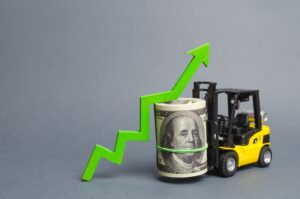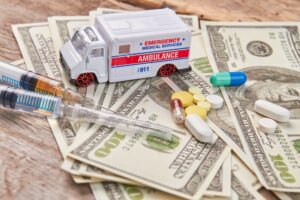n 2025, car leases and auto loans have become one of the most underestimated financial burdens for Americans on modest incomes. While economic headlines focus on interest rates or stock market optimism, the reality on the ground is that millions of people are suffocating under monthly car payments they can no longer afford—but can’t escape either.
1. Payments Are Fixed—But Everything Else Isn’t
Many Americans locked into car loans between $450–$700/month during the 2021–2022 peak of the vehicle pricing surge. That’s when:
- Supply chain disruptions reduced vehicle availability
- Chip shortages made even used cars scarce
- Dealer markups inflated prices across the board
- Many buyers had no choice but to accept high prices just to maintain transportation
Those loans were often stretched across 72 or even 84 months to make monthly payments “affordable” on paper.
Now, in 2025, those fixed payments remain—but everything else in the car ownership ecosystem has gotten worse:
- Auto insurance is up significantly—especially for younger, lower-income, or urban drivers
- Fuel prices continue to fluctuate, and even minor increases strain tight budgets
- Repairs and parts are more expensive due to inflation and supply constraints
The total cost of keeping the car running—not just the loan—has increased by hundreds of dollars each month for many households. Yet income has barely moved.
2. No Room to Refinance or Trade In
In theory, refinancing could offer relief—but in reality, it’s a non-starter for many people:
- Interest rates remain elevated in 2025, making refinancing either too costly or not worthwhile
- Many borrowers are still underwater on their loans, especially if they financed over 6–7 years or paid over MSRP during the pandemic surge
- Trading in the car doesn’t solve the problem—it often just transfers negative equity into another loan, trapping borrowers in a cycle of rising debt
So even though the monthly payment may be crushing, there’s no affordable escape route. Borrowers are essentially imprisoned by their vehicles—financially and logistically.
3. Cars Are Not Optional
This is where the emotional weight sets in: for the vast majority of Americans, especially outside large metro areas, a car isn’t a luxury—it’s survival.
- Public transportation is limited or nonexistent in most suburban and rural areas
- Many jobs require off-hour commuting or travel that buses don’t support
- Families need to transport children to school, medical appointments, and multiple jobs
- Even within cities, infrastructure is built for car ownership, not affordability
Giving up a vehicle isn’t feasible. It’s not about pride or lifestyle—it’s about staying employed and caring for your family.
People will sacrifice food, medicine, and housing stability before losing their car, because they know losing the car means losing access to every other resource.
4. The Car Becomes the Crisis Trigger
A vehicle-related issue is often the tipping point that pushes families from barely managing to financial freefall.
Here’s how the dominoes fall:
- The car breaks down → repair is unaffordable → can’t drive to work
- Work is missed or lost → income drops → bills fall behind
- Loan payments are missed → car is repossessed → credit takes a hit
- Damaged credit means future borrowing is harder and more expensive → the financial spiral deepens
This cycle disproportionately affects people who were already budgeting to the dollar.
The car, meant to enable stability, becomes the catalyst for financial collapse. And it all starts because of a system that assumes car ownership is optional or elastic—it’s not.
Repossessions Are Surging
This pressure is showing up in the data.
In 2024, 1.73 million vehicles were repossessed in the U.S.—a 16% increase over 2023 and the highest number since the 2008 recession.
(Source: PYMNTS.com)
Projections for 2025 indicate that repossessions could reach 2.1 to 2.25 million vehicles, especially among subprime borrowers or households hit hardest by inflation.
(Source: CURepossession)
These aren’t luxury cars. These are mid-size sedans, used trucks, and aging SUVs—the lifelines of working-class America.
What Can People Do?
Unfortunately, options are limited for those already locked into unaffordable car loans—but there are some steps that can help slow or mitigate the crisis:
- Call your lender early: Before missing a payment, ask about hardship extensions, loan modifications, or deferral programs. Some lenders will offer options if you’re proactive.
- Explore refinancing anyway: Even if interest rates are higher, a refinance could still lower your payment if your loan was poorly structured or high-interest to begin with.
- Sell before repossession: If you can break even or minimize negative equity, selling the vehicle yourself (before it’s taken) can reduce long-term credit damage.
- Downsize if possible: It may mean sacrificing comfort or convenience, but moving to a smaller or older car with no payment can provide breathing room.
But it’s important to be realistic: these are survival moves, not solutions.
It’s Not Just a Car—It’s a Lifeline
In a country where everything revolves around mobility—jobs, schooling, healthcare, childcare—the car isn’t just a vehicle. It’s your link to participation in the economy.
When that link becomes unaffordable, everything downstream suffers. And millions are now living that reality—paying more than they can afford, with no way out.
If we want to talk about inflation, affordability, or financial health in 2025, we need to stop skipping over the car loan. It may be the single most dangerous debt in the lives of millions of Americans right now.







